I’m a bit of a self confessed obsessive when it comes to matters of off camera flash in my photography. I think its fair to say that I’ve studied, practised and used off camera flash in my photography, more so than any other technical area over a prolonged period of time. In fact I often recall methods of joining cables together to fire speedlights off camera years ago, and certainly long before it became in any way ‘fashionable’ and way before wireless triggers.
Very recently I’ve bought into a whole new system of off camera flash and here’s my thoughts on it.
Until quite recently the conventional and most convenient route to off camera flash for many photographers, including myself was and is using speedlights. Speedlights are small, reasonably lightweight and generally portable. I’ve used a pair of speedlights for all my on and off camera flash work for years and generally happy with their use and the results. It’s fair to say however that speedlights in their current form were never built with an intended use of off camera flash.
The single biggest drawback with speedlights is their relatively low power output, especially relevant when so many photographers imagined concept of off camera flash is the iconic dramatically underexposed sky with the subject lit by flash on a beautifully sunny blue sky summers day. F18 stuff. While not impossible, its certainly challenging with a speedlight. Another longterm gripe I’ve had with speedlights is the complex methods of triggering them remotely, and this then leads to the whole value for money issue. For their power output speedlights are expensive relative to a studio flash for example. Add to this the expensive triggering systems and it soon starts to mount into a sizeable amount of money for limited power output.
I’ve never witnessed change as rapid in any other area of photography as I have in speedlights and off camera flash in the past six months. It’s almost impossible to keep up! As recent as a year ago a typical Canon or Nikon user could use their camera manufacturers proprietary equipment to fire their speedlight off camera, or as an alternative buy into the Pocket Wizard system. This is aside from the much cheaper 3rd party eBay triggers available of course. Now it’s a whole new ballgame. There are now way too many options to list, with so many 3rd party versions of speedlights which now have wireless technology built in.
It seems perfectly reasonable to me that flash manufacturers have cottoned on to the whole fashionable surge in off camera flash popularity, both by professional photographers needing a professional solution, and keen amateurs wanting good results without massive expense and complication. They have realised the shortcomings in speedlights and filled a wide open gap which existed by now providing a real (better) alternative to speedlights for those photographers who want to take off camera flash a little more seriously. I say better alternative in terms of a flash which is still as portable and lightweight as a speedlight, but which provides a much higher flash output power, is convenient to set up and use, and is good value for money compared to speedlight options. In my opinion the bottom line is that speedlights were never made to be used as a serious off camera flash.
One such system is the Lencarta Atom 180. I was introduced to this system by a photography colleague who arrived into the studio one afternoon with it. I was completely sold within 5 minutes of seeing and using it and immediately placed an order for one myself. It’s portable, lightweight, has hight power output, is easy to control wirelessly, reasonably priced and has a great range of lighting modifiers available which also are very reasonable priced.
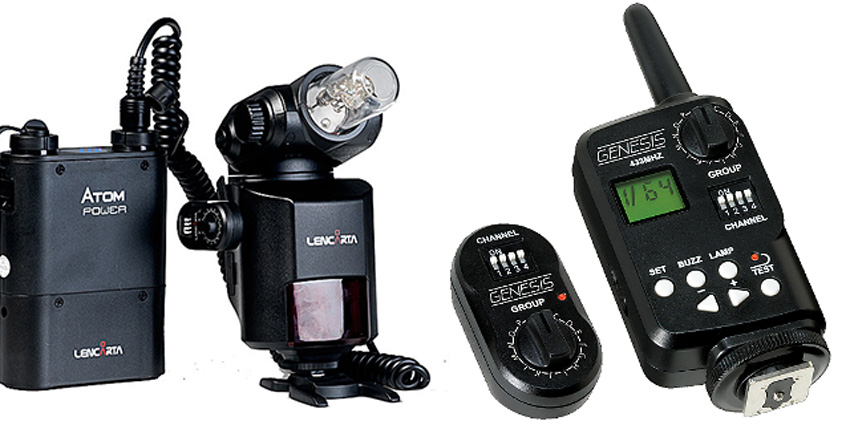
This flash system is also branded as Cheetah in the States and as Genesis 180 by Calumet.
A couple of weeks ago I got together with my photography colleague and we headed out one afternoon, each with our Lencarta flash combined to give us two. We met up with Aisling who was kind enough to model for us, and we headed to the nearly Argory as our location.
While a late November afternoon was never going to test the higher power output of the flashes, it was still a bright late autumn afternoon and gave us a good feel for the new flash system.
Here’s some of the photos.
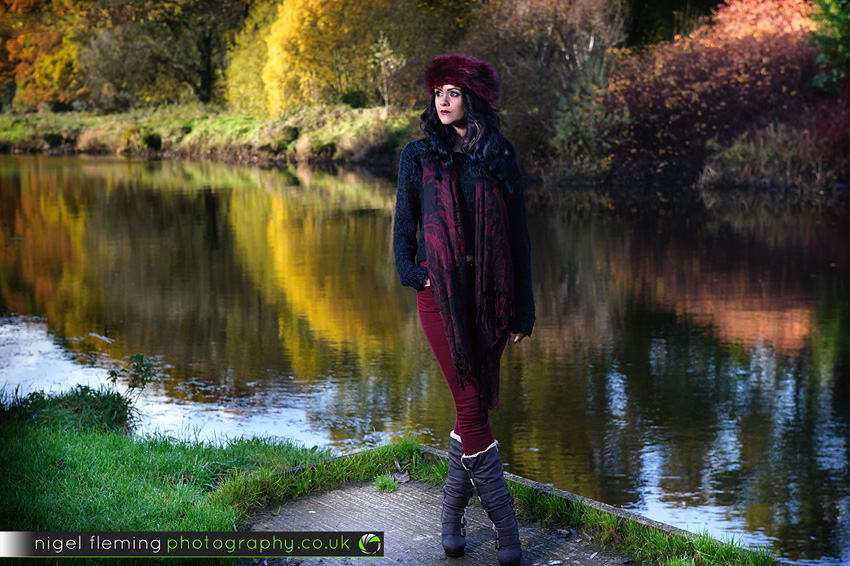
The above photo was a typical off camera flash one where I underexposed the ambient part to darken and saturate the background colours, then added the Lencarta Atom flash on a light stand positioned to camera left. Even with the beauty dish attachment fitted it still provided a good even spread of light from head to toe.
As we proceeded on up the side of the river there was a beautifully backlit area with a beech tree which still had some of its leaves on. Using a shallow depth of field the backlit leaves made a great autumnal background for this photo. Careful positioning of Aisling meant the strong late afternoon sun provided a great backlight on her. With this all in mind it was just a matter of positioning and turning on the flash and adjusting to taste to get the correct exposure on Aisling. Here I used the soft box attachment for the Lencarta to balance the flash with the background light.
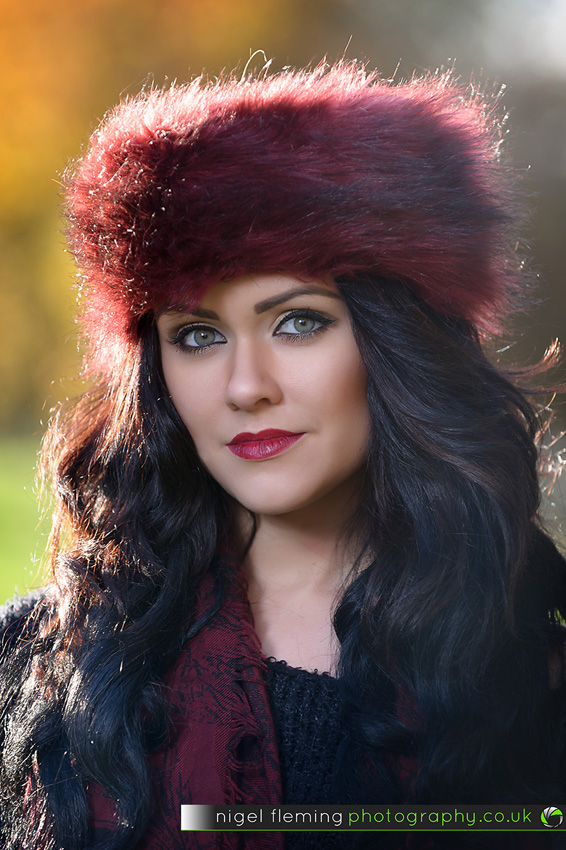
I was particularly happy with this one because it gave us the chance to use two flashes. The idea was to artificially create the illusion of sunlight where there was none. A flash was used from the front and the back.
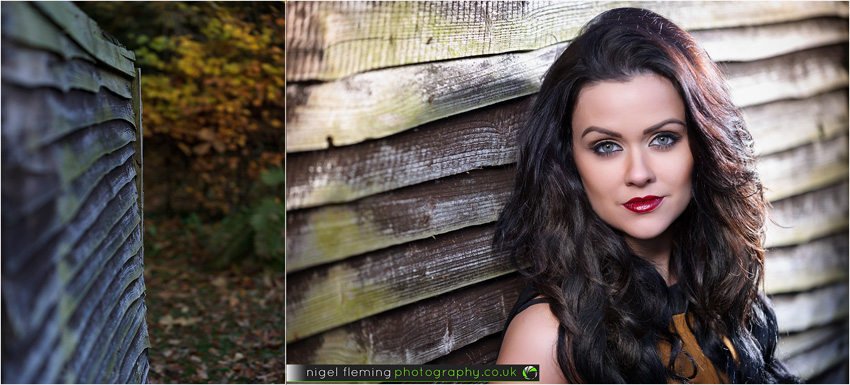
This was our final setup for the afternoon. Lime Tree Walk as its known is one of my favourite parts of the Argory. The trees were beautifully lit by the low sun on the opposite side to the path so we had to take to the bank for this. I lined the trees up like columns and used Aisling to help fill the space where a tree was missing from the row.
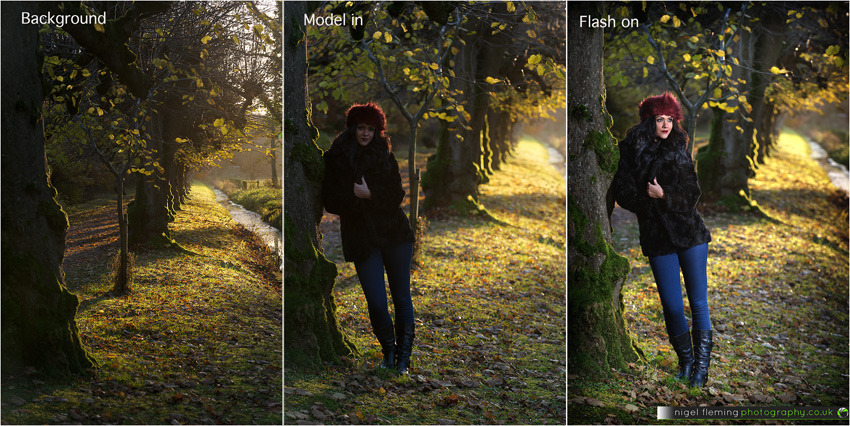
So this was the first outing of the Lencarta Atom flash system and I have to say I was seriously impressed. It’s plenty powerful, lightweight and simplicity itself to use. The only slight drawback is the lack of TTL, but to be realistic about it, the flash is so quick to change up and down in manual power I don’t see this as any issue at all. In fact manual power will always give much more consistent results than TTL.

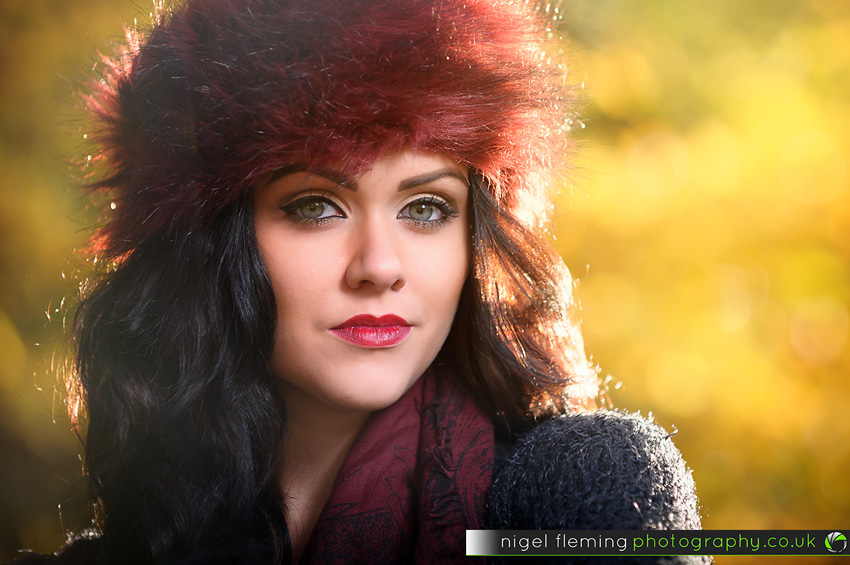
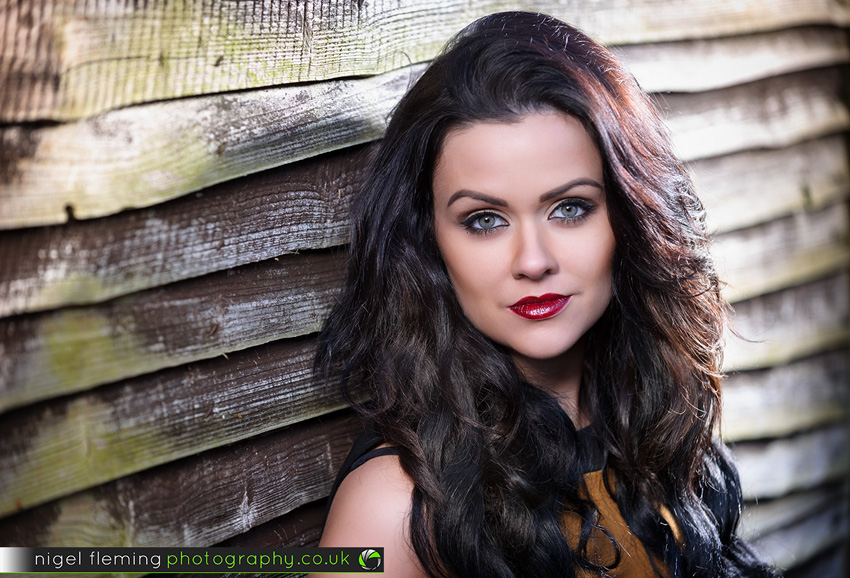
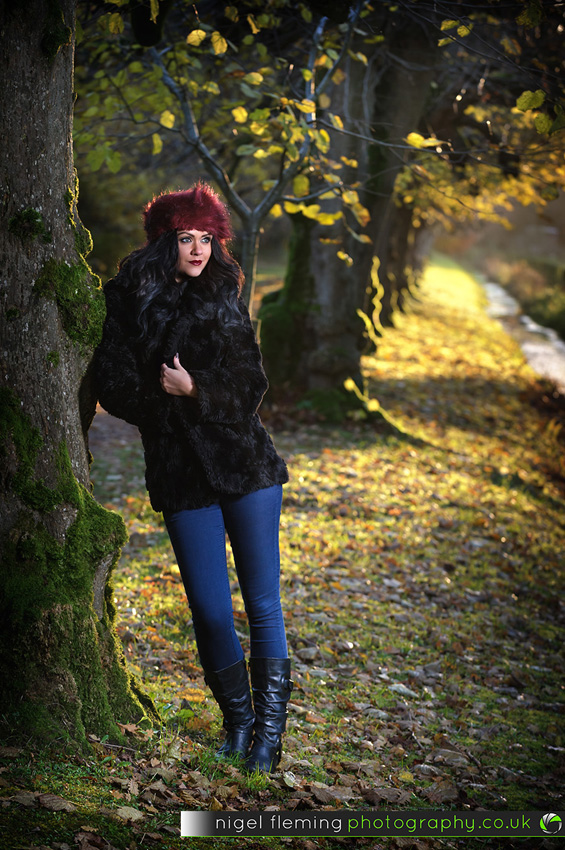



Hi Nigel your photography is amazing. I am also well into off camera flash. I use a Canon 5d mk 111 i have 1 x canon 580 ex 2 flash 2 x 430ex11 and a younguo 368ex 11 that i use wireless using the yonguo 622c flash triggers. I know exactly what you mean you have to have your speedlights really close to the model with modifiers because of the lack of power. I am impressed with the results you are getting from this new system thank you for sharing this with us. All the best Andrew.
Hi Andrew.
Thank you for your very kind comments. They’re really appreciated.
You have an impressive list of equipment there. I think speedlights will remain the main choice of most photographers for a good time to come yet, given that it’s something most photographers already have in their camera gear.
Glad you enjoyed the blog
Nigel 🙂
Love the Autumn colours combined with beautiful lighting Nigel. These are the type of images that we would all love to be able to produce. The second third and fourth are my favourites. Having seen the Atom system in operation it definitely delivers plenty of bang for buck (in the right hands). Given its price, it compares favourably with the high end Canon and Nikon flashes combined with radio controllers etc.
Regards,
Tom
Thanks for your kind comments Tom. This system certainly is a real alternative to speedlights, though I suspect many photographers will still favour speedlights as that’s what they already have in their kit.
I’m concentrating less these days on the technicalities of firing a flash off-camera, and more on what to do with the flash once it’s off-camera. There’s now so many options/variables for flash/trigger/camera manufacturer that its almost impossible to explain how every combination technically works with each camera manufacturer.
Glad you enjoyed using this flash system alongside your speedlights Tom.